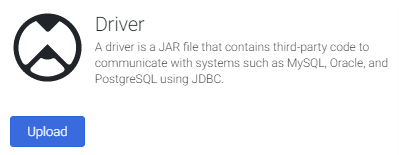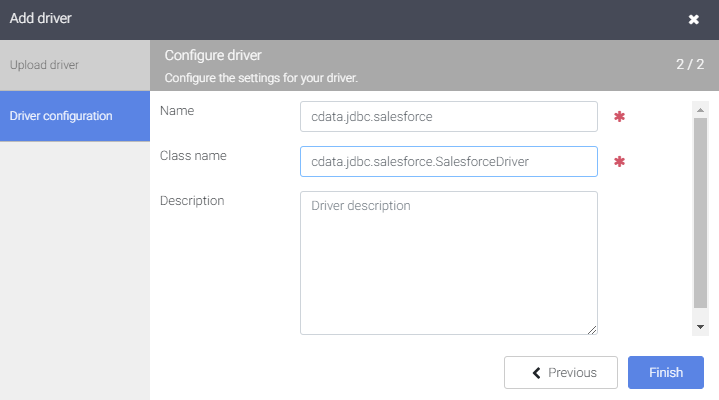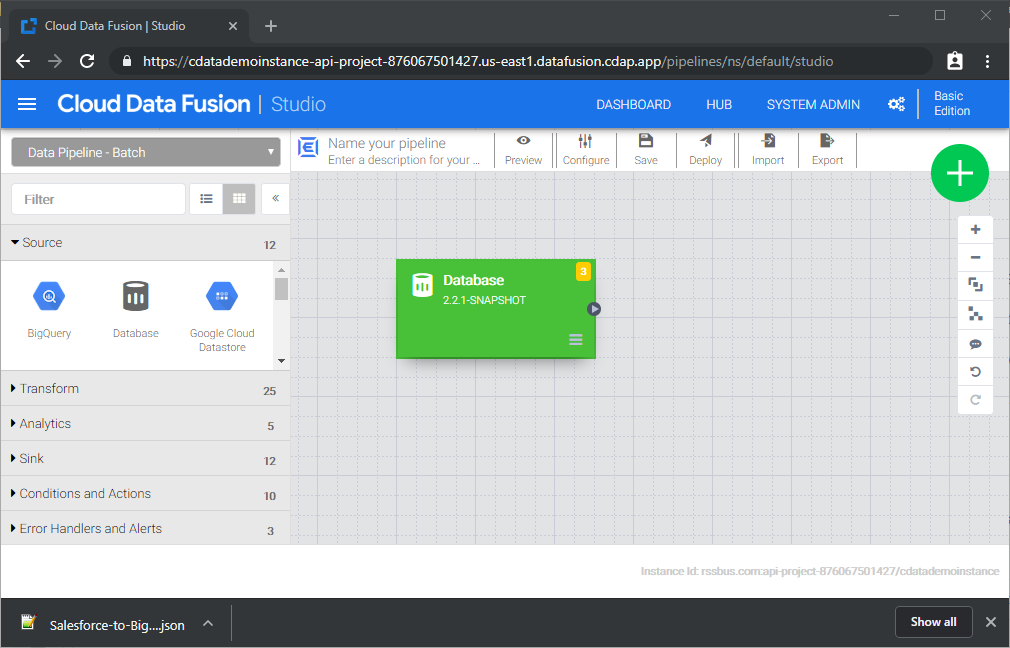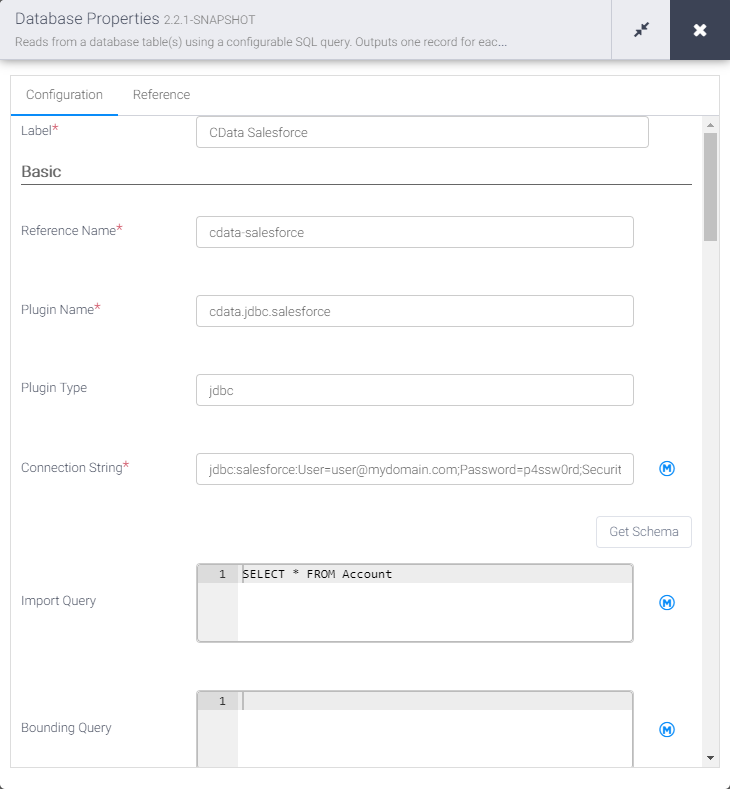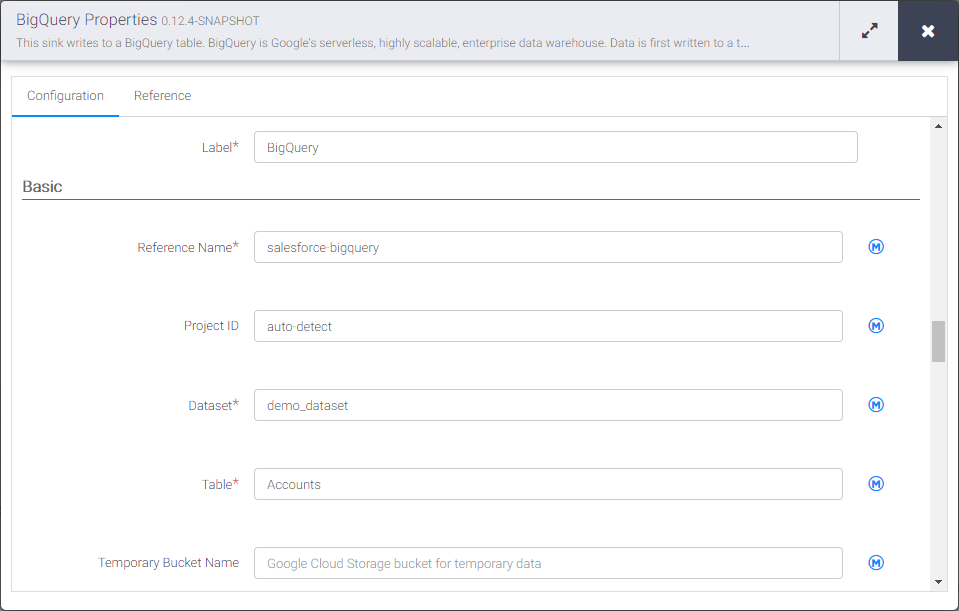Discover how a bimodal integration strategy can address the major data management challenges facing your organization today.
Get the Report →Build SAP-Connected ETL Processes in Google Data Fusion
Load the CData JDBC Driver into Google Data Fusion and create ETL processes with access live SAP data.
Google Data Fusion allows users to perform self-service data integration to consolidate disparate data. Uploading the CData JDBC Driver for SAP ERP enables users to access live SAP data from within their Google Data Fusion pipelines. While the CData JDBC Driver enables piping SAP data to any data source natively supported in Google Data Fusion, this article walks through piping data from SAP to Google BigQuery,
Upload the CData JDBC Driver for SAP ERP to Google Data Fusion
Upload the CData JDBC Driver for SAP ERP to your Google Data Fusion instance to work with live SAP data. Due to the naming restrictions for JDBC drivers in Google Data Fusion, create a copy or rename the JAR file to match the following format driver-version.jar. For example: cdatasaperp-2020.jar
- Open your Google Data Fusion instance
- Click the to add an entity and upload a driver
![]()
- On the "Upload driver" tab, drag or browse to the renamed JAR file.
- On the "Driver configuration" tab:
- Name: Create a name for the driver (cdata.jdbc.saperp) and make note of the name
- Class name: Set the JDBC class name: (cdata.jdbc.saperp.SAPERPDriver)
![Configuring the driver (Salesforce is shown.)]()
- Click "Finish"
Connect to SAP Data in Google Data Fusion
With the JDBC Driver uploaded, you are ready to work with live SAP data in Google Data Fusion Pipelines.
- Navigate to the Pipeline Studio to create a new Pipeline
- From the "Source" options, click "Database" to add a source for the JDBC Driver
![Adding a database source]()
- Click "Properties" on the Database source to edit the properties
NOTE: To use the JDBC Driver in Google Data Fusion, you will need a license (full or trial) and a Runtime Key (RTK). For more information on obtaining this license (or a trial), contact our sales team.
- Set the Label
- Set Reference Name to a value for any future references (i.e.: cdata-saperp)
- Set Plugin Type to "jdbc"
- Set Connection String to the JDBC URL for SAP. For example:
jdbc:saperp:RTK=5246...;Host=sap.mydomain.com;User=EXT90033;Password=xxx;Client=800;System Number=09;ConnectionType=Classic;Location=C:/mysapschemafolder;You can connect to SAP systems using either librfc32.dll, librfc32u.dll, NetWeaver, or Web Services (SOAP). Set the ConnectionType connection property to CLASSIC (librfc32.dll), CLASSIC_UNICODE (librfc32u.dll), NETWEAVER, or SOAP.
If you are using the SOAP interface, set the Client, RFCUrl, SystemNumber, User, and Password properties, under the Authentication section.
Otherwise, set Host, User, Password, Client, and SystemNumber.
Note: We do not distribute the librfc32.dll or other SAP assemblies. You must find them from your SAP installation and install them on your machine.
For more information, see this guide on obtaining the connection properties needed to connect to any SAP system.
Built-in Connection String Designer
For assistance in constructing the JDBC URL, use the connection string designer built into the SAP JDBC Driver. Either double-click the JAR file or execute the jar file from the command-line.
java -jar cdata.jdbc.saperp.jarFill in the connection properties and copy the connection string to the clipboard.
![Using the built-in connection string designer to generate a JDBC URL (Salesforce is shown.)]()
- Set Import Query to a SQL query that will extract the data you want from SAP, i.e.:
SELECT * FROM MARA
![Configuring the database source]()
- From the "Sink" tab, click to add a destination sink (we use Google BigQuery in this example)
- Click "Properties" on the BigQuery sink to edit the properties
- Set the Label
- Set Reference Name to a value like saperp-bigquery
- Set Project ID to a specific Google BigQuery Project ID (or leave as the default, "auto-detect")
- Set Dataset to a specific Google BigQuery dataset
- Set Table to the name of the table you wish to insert SAP data into
![Configuring the BigQuery sink]()
With the Source and Sink configured, you are ready to pipe SAP data into Google BigQuery. Save and deploy the pipeline. When you run the pipeline, Google Data Fusion will request live data from SAP and import it into Google BigQuery.
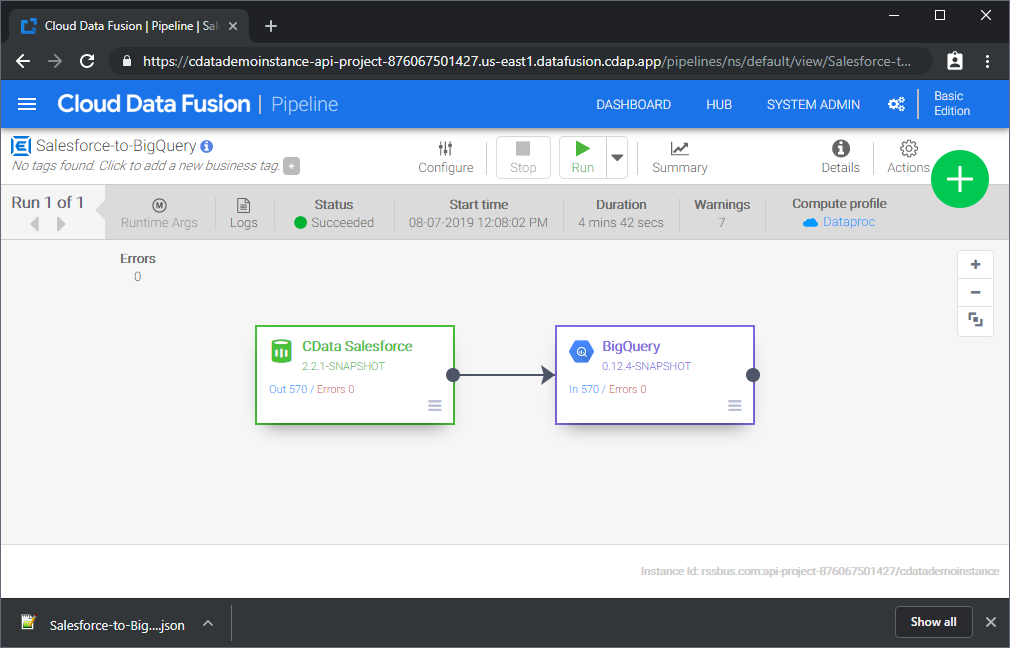
While this is a simple pipeline, you can create more complex SAP pipelines with transforms, analytics, conditions, and more. Download a free, 30-day trial of the CData JDBC Driver for SAP ERP and start working with your live SAP data in Google Data Fusion today.






